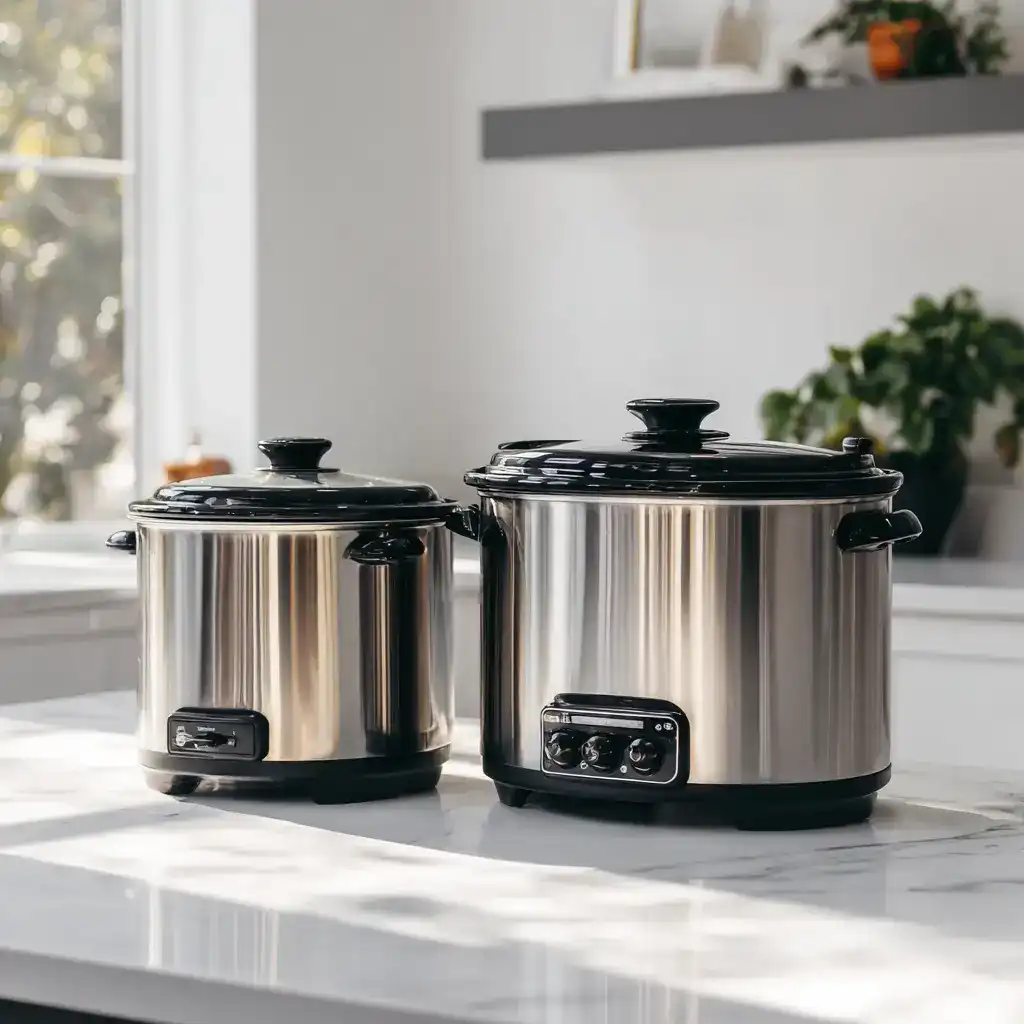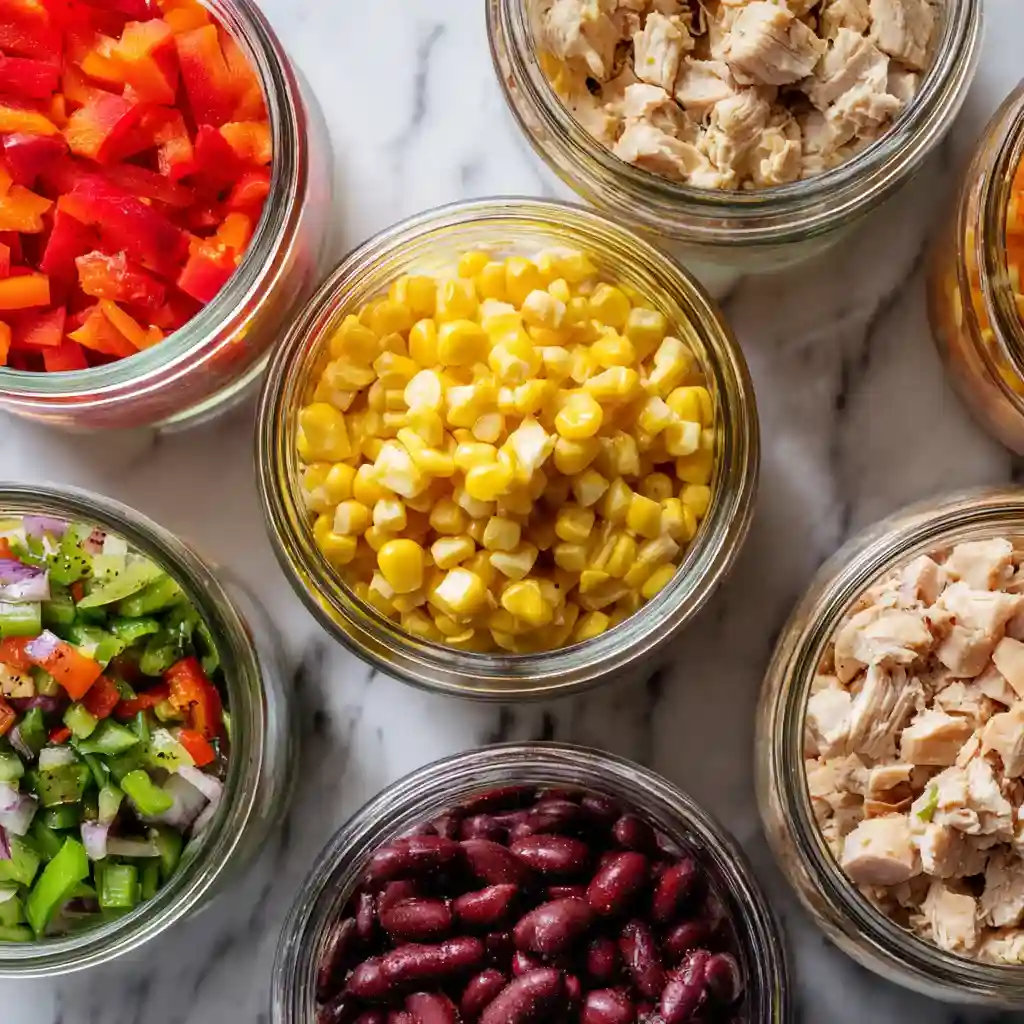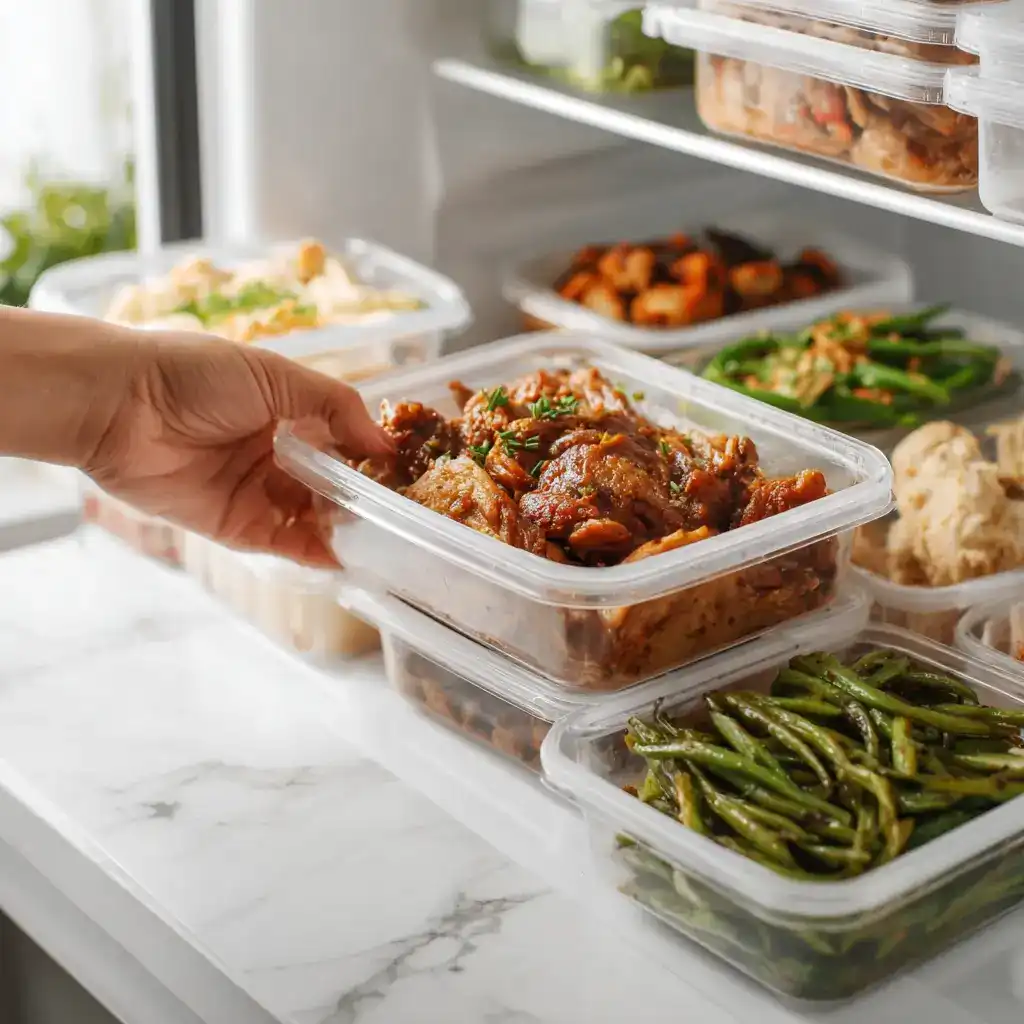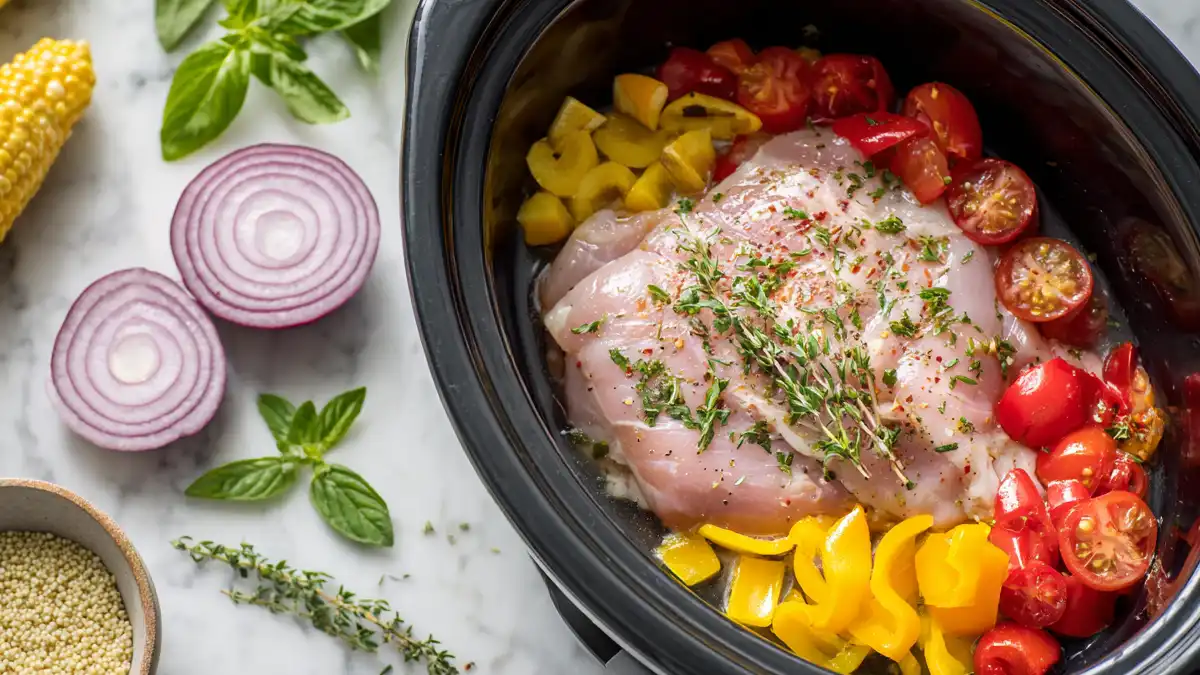Table of Contents
Using a slow cooker in summer might sound counterintuitive, but it’s actually one of the smartest ways to cook when temperatures rise. Instead of heating up your kitchen with a traditional oven or stovetop, slow cookers allow you to prepare hearty, flavorful meals without breaking a sweat. Whether you’re planning a backyard barbecue, trying to save on energy bills, or just want dinner ready when you walk through the door, this guide will walk you through how to use a slow cooker efficiently during the hottest months of the year.
We’ll cover why summer is the perfect season for slow cooking, how to choose the right model for your needs, setup tips to beat the heat, meal planning tricks, ingredient strategies, safe food handling, and common mistakes to avoid. We’ll also answer the most frequently asked questions and wrap up with practical takeaways to help you make the most of your slow cooker all summer long.
Need inspiration? Try our no‑bean chili slow cooker recipe
Why Summer Is Ideal for Slow Cooking
Keep Your Kitchen Cool and Comfortable
Slow cookers release minimal heat, unlike ovens or stovetops. That means your kitchen stays cooler, even when cooking for hours. It’s a smart way to make meals without heating up your home.
Avoid Turning on the Oven
Ovens raise the temperature fast — not ideal in summer. A slow cooker skips the need for preheating and long bake times. Just set it up and go enjoy your day.
Perfect for Outdoor Days and Busy Schedules
Summer’s meant for relaxing, not babysitting a pot. A slow cooker lets you cook while you hit the beach, run errands, or host friends. Toss in ingredients in the morning, and dinner’s done by evening — no stress, no sweat.
Many summer-friendly recipes are also “dump-and-go.” Less prep, less heat, more freedom.
Choosing the Right Slow Cooker for Summer Meals
Ideal Sizes for Small vs. Large Portions
In summer, you don’t need to overcook or overheat your kitchen. Smaller 2–4 quart slow cookers are ideal for singles or couples. They heat faster and use less energy.
For families or backyard parties, go for a 6–8 quart model. It’s great for making pulled pork, soups, or batch meals. Just know it uses more power and space.

Programmable vs. Manual Models
A programmable slow cooker gives you freedom. Set it, forget it, and return to a hot meal. It’s perfect for busy summer days out.
Manual cookers are cheaper and simpler. But they don’t switch to “warm” mode automatically. Better for when you’re home and monitoring.
Energy-Efficient Slow Cookers
Summer heat is tough enough. Don’t let your cooker add to it. Newer models use less power and offer eco-modes to cut your energy bill.
Look for ceramic inserts and tight-fitting lids. These help retain heat and cook evenly without wasting electricity.
Setup Tips to Beat the Heat
Place Your Slow Cooker in Cooler Areas (Garage, Patio)
During hot weather, placing your slow cooker in the right spot matters. Try setting it up in the garage, a shaded patio, or even a covered porch. These areas are naturally cooler and help prevent extra heat buildup inside your kitchen.
Keeping the appliance away from direct sunlight and enclosed spaces also helps it run more efficiently, saving both time and energy.
Use Liners to Avoid Sticky Cleanup
Nobody wants to scrub dishes in the heat. Slow cooker liners make clean-up quick and easy. Just lift out the liner and toss it — no scrubbing needed.
This trick is especially useful when cooking sticky sauces or cheesy dishes that can leave a tough mess behind.
Schedule Early Morning or Overnight Cooking
Beat the heat by cooking while it’s cool. Set up your slow cooker in the early morning or overnight, when outdoor temperatures are lower.
This reduces strain on your AC and ensures your meals are ready just when you need them — without any mid-day kitchen heat-ups.
Meal Planning & Timing Tricks
Use Fresh Produce That Holds Texture
Some veggies hold up better in long cooking. Think bell peppers, zucchini, green beans, or cherry tomatoes. They stay firm and flavorful, even after hours in the slow cooker.
Avoid delicate greens or soft fruits unless you add them at the end. This way, your meals keep a fresh, vibrant texture — perfect for summer dishes.
Prepare Dump-and-Go Meals Ahead
Save time with dump-and-go recipes. These meals let you prep ingredients in advance — just store them in zip bags or containers. In the morning, toss everything into the cooker, set the timer, and go about your day.
This method is ideal for busy summer mornings when you want to enjoy your coffee instead of chopping veggies.
Rotate Meals Between Proteins and Light Dishes
Balance your summer menu with a mix of proteins and light veggie-based meals. One day do shredded chicken or beef. The next, switch to a lentil stew or quinoa bowl.
Rotating helps avoid heavy meals every day, keeps the slow cooker exciting, and lets you enjoy a range of summer flavors without the burnout.

For a rich weeknight dish, check out our garlic butter steak bites.
Seasonal Ingredient Strategies
Use Fresh Produce That Holds Texture
Summer is peak season for vibrant produce. Use veggies that don’t fall apart after long cooking, like bell peppers, carrots, corn, and squash. These maintain shape and bite — even after hours in a slow cooker.
To keep things crisp and colorful, add tender items like spinach or basil toward the end of the cook time.
Try our gut‑friendly low‑FODMAP beef and potato stew for a comforting option.
Best Summer Herbs and Aromatics
Fresh herbs can boost the flavor of slow-cooked dishes — but timing matters. Rosemary, thyme, and oregano can handle long cooking. Softer herbs like basil, cilantro, or parsley should be stirred in just before serving.
Onions, garlic, and shallots also shine in slow cooker meals, delivering deep, mellow flavor without overwhelming the dish.
Minimize Long Cooking Ingredients (e.g., Starchy Roots)
Avoid heavy ingredients like potatoes, sweet potatoes, and other starchy roots during summer. They take longer to cook and can make your dish feel too heavy for the season.
Instead, go for lighter fillers like quinoa, canned beans, or quick-cooking grains. These ingredients complement summer veggies and won’t weigh you down.
Summer-Safe Food Handling
Keep Ingredients Refrigerated Before Cooking
In summer, bacteria grows faster — especially when food sits out too long. Always keep your ingredients chilled until you’re ready to load the slow cooker.
Prep in advance if needed, but don’t let meats, dairy, or cut veggies sit on the counter while you get things ready.

Avoid Overfilling the Slow Cooker
Filling your slow cooker to the brim might seem efficient, but it slows down cooking and raises safety risks. Leave at least 1 inch of space at the top so steam circulates properly and food reaches safe temperatures.
Stick to filling it between halfway and three-quarters full for the best results.
Proper Storage of Leftovers
After cooking, let your dish cool slightly, then divide it into shallow containers and refrigerate within 2 hours. In summer heat, this step is crucial to prevent foodborne illness.
Don’t leave your slow cooker on “warm” for too long either — 2 to 4 hours is usually the max for safety.
Final Tips & Common Mistakes to Avoid
Lifting the Lid Too Often
Every time you lift the lid, heat escapes. That means your meal takes longer to cook and may not reach safe temperatures. In summer, this also forces your cooker to work harder, generating more heat.
Resist the urge to peek — unless the recipe specifically calls for it. Let the cooker do its job.
Misusing High vs. Low Settings
Many people assume “high” cooks faster — but it’s not always better. In summer, the “low” setting is usually more energy-efficient and prevents overcooking lighter ingredients like veggies or fish.
Use “high” only when time is tight or the recipe demands it. Otherwise, slow and low is the way to go.
Overcooking Tender Ingredients
Some ingredients just don’t need hours of cooking. Dairy, seafood, soft vegetables, and fresh herbs can turn mushy or lose flavor if left too long.
Add these in the last 30 minutes or so. Your dish will taste fresher and hold better texture — perfect for light summer meals.
FAQs
Can I Leave My Slow Cooker Running All Day or Overnight in Hot Weather?
Yes, most modern slow cookers are safe to use unattended for long periods — even in hot weather. Just make sure the unit is placed on a heat-safe surface, not near flammable materials, and that it’s functioning properly. Also, avoid placing it in direct sunlight or cramped spaces.
What Is the Best Time of Day to Cook with a Slow Cooker in Summer?
Early morning or late evening is best. These cooler hours reduce the impact on your home’s temperature and lighten the load on your air conditioner. Overnight cooking is also great for breakfast dishes or prepping ahead.
Should I Thaw Ingredients Before Using the Slow Cooker?
Absolutely. Always thaw meat and poultry before slow cooking. Frozen ingredients can prevent the cooker from reaching a safe temperature quickly, increasing the risk of bacteria growth. In summer, food safety is even more critical.
How Can I Avoid Overheating My Kitchen When Slow Cooking?
Use your slow cooker outside the kitchen — like on a shaded patio or in the garage. Choose recipes with shorter cooking times or those that don’t require browning beforehand. Also, avoid using high heat settings unless necessary.
Do I Need to Preheat the Slow Cooker Before Adding Ingredients?
It’s not required, but it helps. Preheating your cooker while you prep ingredients can reduce total cook time and bring food to a safe temperature faster — especially helpful in summer to limit time in the danger zone.
What’s the Difference Between Cooking on HIGH vs LOW?
Both settings reach the same maximum temperature — LOW just takes longer. Cooking on HIGH is faster but can overcook delicate ingredients. In summer, using the LOW setting helps maintain flavor and moisture without overheating your kitchen.
Can I Use Fresh Herbs and Vegetables at the Beginning of Cooking?
Hard herbs like rosemary or thyme? Yes. Tender herbs like basil or parsley? Add them near the end to preserve flavor. The same goes for delicate veggies — stir them in during the last 30 minutes to keep texture and taste intact.
How Long Can I Leave Food on “Warm” Before It Becomes Unsafe?
The “warm” setting keeps food above 140°F — safe for up to 2–4 hours. After that, bacteria can begin to grow. If you’re not eating soon, transfer food to shallow containers and refrigerate promptly.
Conclusion
Using a slow cooker efficiently in summer is all about cooking smarter, not hotter. From keeping your kitchen cool to planning light, seasonal meals — it’s an easy, energy-saving solution for warm-weather cooking.
Choose the right size and model, place your cooker in a cooler spot, and make the most of early mornings or overnight runs. Focus on fresh produce, rotate lighter meals, and avoid overcomplicating your dishes. Follow smart food safety practices, and you’ll enjoy tasty, hands-off meals all season long.
Whether you’re prepping for a picnic, cooking for the family, or just avoiding the oven, your slow cooker can be your best summer kitchen ally.
Want more ideas like this? Follow us on Facebook and Pinterest for simple, flavorful recipes!
You might also like these recipes


3 thoughts on “How to Use a Slow Cooker Efficiently in Summer”